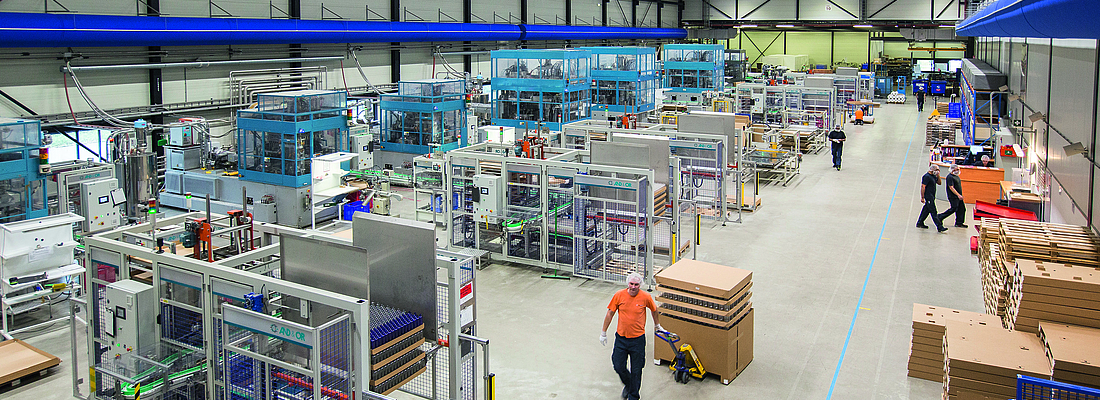

An interview with Marcel Schröder, Managing Director, and Guido Eijsermans, Key Account Manager of PET Power, on the challenges of the one step packaging market.
Since when is PET Power on the PET packaging market?
Schröder: The company started in 1995, so 21 years ago. The core of the team came from an existing company Skillpack that already embarked on the PET journey in 1985. So at PET Power we have some of the staff members with 30 years of PET history in their veins!

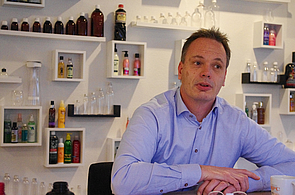
What has changed for PET Power over the past 30 some years? And how has PET Power itself changed?
Schröder: Today we are a member of the RPC Group, which is publicly listed. We have experienced continuous growth, including growth of 5–10% in recent years. This solid development has led to > 50 Million Euro in Sales today, which we generate with our 250–260 employees and the more than 50 single-stage stretch-blow moulding machines that we have in operation.
Was this growth a reason to look for a new investor or partner?
Schröder: PET Power was acquired in February 2015. Prior to this we were privately held by John Raymonds, an American investor who acquired us in 2004. We want to continue to grow. To do this we need capital, especially here in Europe, where we must be highly automated in order to be financially successful. John understood this strategy, but he didn’t want to continue his activity in the plastic business and thus he didn’t want to continue to invest. His interests had shifted, so he said to me, “Marcel, please look for a new owner for PET Power.” We worked very well together for 10 years. We spoke to five or six companies who responded to our call for tenders and ultimately chose RPC. For John the acquisition was not just a question of price, but a question of where PET Power would feel at home and be able to continue to develop optimally. RPC was a very good fit, because RPC also prefers a decentralized organization and the PET Power brand remains intact. Joining RPC offers us nothing but advantages, because RPC to date follows a strongly decentralized business model. This meant for us continuity of our PET Power organization and brand. RPC’s reputation on the market has been very helpful for PET Power. Among other things, we are planning to invest in this location, build a new hall and set up new machines – clear proof that RPC believes in us.
How has the competitive landscape developed?
Schröder: In Europe, we now count approximately 60 capable PET producing colleagues. Many national suppliers – for example, Acti Pack in France, SAUER or GIZEH in Germany, M&H Plastics etc. in England - with turnover between 20-100 million Euro’s have grown to become international players. There is a large group of regional companies with 10-15 machines with sometimes multiple converting technologies. And we count an even larger group of start-ups with sometimes just 1-5 machines. Some companies have grown fast, e.g. Masterchem, and are viewed as strong competition. RPC is 100% correct in the choice to look for consolidation and creating an interesting network for its clients. RPC is now definitely a larger player in the PET market and will continue to grow, a dedicated step.
What distinguishes you from the competition?
Schröder: We are proud of our standard product range with 600 different moulds as well as a similar number of customised moulds – all together we are talking about 1000–1200 different blow moulds which are part of the PET Power brand. Behind each individual form and each individual project is a lot of expertise.
With so many competitors, have PET Power’s goals changed somewhat over the years, i.e. has more emphasis been placed on automation and cost leadership than on product innovations?

Schröder: What hasn’t changed is this: Customers continue to take time to make decisions, but once the decision is made, they want the delivery to arrive the next day. That hasn’t changed. And it serves as incentive for us. Doing business in our market is increasingly challenging in a volatile market. We need to drive operational excellence to match expected price levels. We need to drive innovation to help our clients stand out among their rivals. We need to be flexible with risk bearing stock and variations in packaging formats as clients can not always predict demand. Doing business thus has become a balancing act between efficiency, innovation and flexibility. Every year we draw a graph with these three axis and ask ourselves how we can excel on all elements. Striking a balance is the result of discussions and forms the base of our behavior and our investments and most importantly we do this always with an eye on customer intimacy. The one who does this balancing act in the most optimal way, that is the winning company of today and tomorrow. It is the EFI principle at work.
Are you exclusively active in the one-step process?
Eijsermans: No. At our site in Etten-Leur here in the Netherlands, we use 1-stage technology only, but already for some years PET Power is using 2-stage technology with its partner network, both within the RPC Group, and beyond. On the longer term it is certainly envisageable that 2-stage will also be introduced at the site in Etten-Leur.
Which markets do you cover?
Eijsermans: We realize and sell products for a large variety of markets. Primarily it concerns food, personal care, pharmaceutical and home care.
In which ways are you represented regionally / locally?
Schröder: PET Power is a strong believer in short communication lines and local service. We therefore have people working with and for PET Power in every country in Europe. This may vary between our own staff, distributors and agents, all of which are backed by a strong back-office in the Netherlands. We regularly dispatch engineers and other colleagues based on the needs of our clients and we try to communicate in their language. Close and personal contacts to clients is very important to us
How did the markets change up until today?
Schröder: Markets change and fluctuate. Changes are seen in the sheer pace of the market demands that seems to increase continuously. Information flows much faster, companies are hooked up through IT connectivity. Product life cycles are shorter and one shot productions are common practice. Another change relates to the increase in base requirements to us as producer, which in itself is a good thing and also protects ourselves as we are both producers and consumers. Compliance in any company to directives on migration, to environment, to safety, to quality testing methods is becoming a world on its own. Fluctuation is related to the general state of the economy. It comes and goes in waves. In the downtime as we experienced some years ago, there was little money to spend by clients and we notice that in the use of more standards, variation with colours rather than with new designs and new blowmoulds. Now the economy seems to pick up again we notice more new design projects, more willingness to invest again in some product lines with a longer term future.
Are the areas pharma and cosmed under explicit pressure concerning the application of lightweighting and the use of recycles?
Eijsermans: Good question and difficult to answer as we see movements in various directions. Lightweighting is a trend that continues across all terrains with a clear aim at savings in both money and sustainability. Offsetting to that is the perception of quality by consumers that in the end still want a bottle instead of a bag. And with bottles with long straight walls the wall distribution / ability to label is also a critical point. Winning with lower weight should not result in efficiency loss on labelling and filling lines ! So we see our customers today in a balancing act and here is where we need to work closely together to get optimum results. The use of recyclates (post consumer) continues to rise in general, but we also notice that some companies are keen to look at eg biopet rather than recycling as they know that post consumer PET can also be very well recycled for other purposes than again bottles and jars. Recycling in real registered pharma applications has not yet been seen at PET Power.
Are markets lost to glass and if so, which markets?
Are markets won by PET?
Schröder: The famous saying is ‘you win some, you loose some’. That would also be a far answer to this question. We strongly believe that there still is a net gain to the plastics community. Fact is that the perception of us as consumers keeps on playing a crucial role. Based on this perceived perception some luxury category producers in eg drinks or personal care still prefer glass or even switch back to glass. Yet, we see many others that with a proper product proposition, including decent closure & decoration are able to be extremely successful precisely in this luxury category with e.g. PET. In more mass markets the trend towards more usage of PET continues, especially given the attractive lower base price of the resin as enjoyed in 2016. Markets for e.g. peanut butter, chocolate spreads, creams etc. are converting more and more. As PET is cracking barriers for higher fill temperatures more markets will move into PET, driven by retail chain that loves this material (light weight, break risks, more on the shelves and in the trucks). PET Power does not wish to be a company that states that material A is better than material B. We clearly believe in PET, but we believe foremost that we should seek a material that suits the client wishes first!
Are other plastic materials in Cosmed, Pharma and Food being substituted by PET?
Eijsermans: To an extent yes, which is partly driven by the base resin price levels that are attractive to PET, but also the continued wish for our clients to actually show their final products in clear material. PET is crystal clear and consumers wish to see transparency in what they buy, hence PET becomes a logical choice !
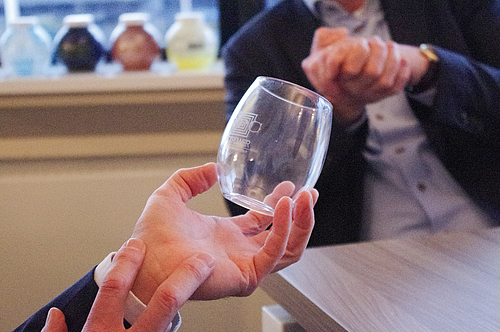
“A Glass is not always glass”
The trend towards the ban of glass during festivals, concerts and on the stands at sports events has created a new and exciting market for PET and other materials such as Tritan.
What are the fundamental challenges in PET for these market segments?
Schröder: Fundamental will be to help our clients to be successful. This means in today’s markets first of all creativity and innovations in designs and functionality. Stand out among the rest with good solutions that meet all the basic criteria (e.g. in time, good quality, acceptable price). We will need to have a flexible production environment, catering for larger and smaller runs, for variations in packaging. The traditional discussion in any company between operational excellence and market flexibility will be a hard one. It is here that Sales and Operation hopefully find a happy marriage.
Eijsermans: PET itself as base resin will not stop in developments. Key will be to improve further barrier properties, especially for water vapour (pharma, personal care), temperature (food) and oxygene (dominantly food). The applications with material of bio-origin is welcomed, especially developments as with PEF/Avantium are followed with interest.
Do you also work with materials other than PET?
Schröder: PET Power itself is a real specialist in PET as the name of the company will tell you. In more than two decades we have developed experience with this base resin and its varieties that includes also masterbatch applications, recyclates and bio-pet. It is the clear core of PET Power today.
In the past years, we have with pleasure embarked on the development of Tritan (trademark Eastman) for thicker wall containers. This includes water flasks, glasses and jars. More and more opportunities are opening up and PET Power aspires to be the specialist partner for its clients with this material and adjacent materials for thicker wall applications. PET Power has a limited assortment in other plastics as PP/HDPE. But, and certainly last but not least, PET Power is a part of the RPC group. Within this group and especially with our division (RPC Bramlage / M&H Group division ) we have a wealth of opportunities in other materials, foremost including PP/HDPE. And naturally we support each other for the benefit of our clients !
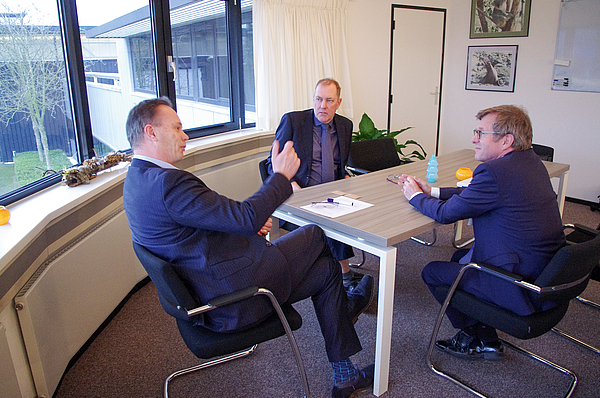
“Ensuring reliability and deliverability is no piece of cake nowadays”
What is your perspective on the area of bio-materials?
Schröder: We encourage the use of bio-materials as at the base it will reduce the need for fossil fuels for plastics. But we are also aware that this is a difficult topic to fully understand and grasp. If we use bio-materials as corn or sugarcane as starting point one can question whether this is good or whether we should also take into account the need for food around the globe. Therefore it seems wise to support especially the production of plastics that is based on plant waste. If we can re-use materials for better value than we have now for waste, then we find a solid base for the development of bio-materials. Also at PET Power we follow and monitor as converter the developments in our resin supply base in order to inform our clients as open and clear as possible. More study is needed and LCA analysis of various resin grades (PET in comparison to PCR to Biopet etc.) are requested to give a more qualified opinion.
What are your experiences with PP in stretch blow molding?
Schröder: At PET Power in honesty limited. Within the wider group we see some examples, but also the use of IBM for this application. The good news is that we are still so busy with PET.
Are your customers approaching you on the topic of “marine littering?
Schröder: We do it the other way around! Our customers, just as you and me, are regularly confronted with this topic, both direct by clients and indirect by publications on e.g. the plastic soup. In the Netherlands, our government has for years run a campaign under the header ‘a better environment starts with yourselves’. We believe this is 100% true. So we do our best to reduce our own carbon footprint first of all. And we do our best to educate people to be responsible in using and discarding of products. We support for many years the Plastic Whale initiative in Amsterdam (www.plasticwhale.org) where plastic is fished from the canals, recycled and the outcome used to make boats (editorial note: see also page 79). 9 boats already are made and are now fishing in Amsterdam for more. If you wish to join us, be welcome on a trip!
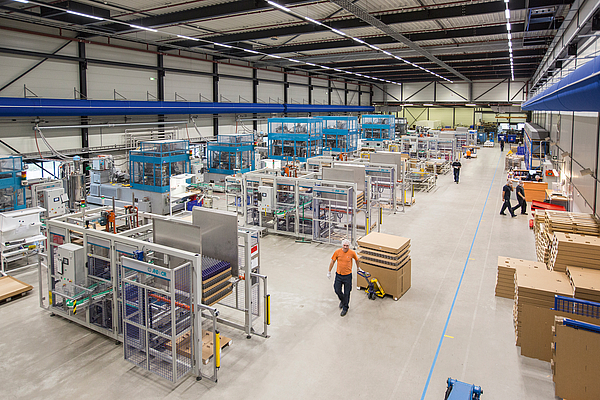
Yes definitly, I am interested in. We asked us and the PET packaging industry in 2015 on our PETnology conference for the first time “ARE WE GREEN ENOUGH?” in our industry and what can our industry do to overcome this problem - the technical solutions are there.
Where do you see the biggest challenges for PET in your markets, both short term and long term?
Eijsermans: As a converter we are part of a supply chain. Hence our challenges will be in line with those of the players in the supply chain, being both resin providers and contract fillers, brand owners and ultimately consumers. We want better products, sustainable and recyclable, appealing in look and feel, innovative, functional, affordable, produced in safe and acceptable circumstances. It sounds too simple, but often we all forget that the basics need to be fulfilled first, short and long term.
Schröder: Another challenge will be to find the proper marriage between 1-stage and 2-stage technology. In the past these were two different worlds which were primarily divided based on volumes. Mass volumes of tens of millions of the same shape, typically for the drinks markets, was 2-stage domain. Smaller runs up to a few million per shape were typically 1-stage areas to target. 1-stage providers as ASB Nissei and Aoki have brought capacity up and 1-stage can now address larger volumes. With the entrance of companies as o.a. Chum Power, Terekas and 1Blow with small versatile blow moulding machines we see 2-stage options for smaller series. No longer the volume is a decisive element in the choice for technology, but merely the quality level of bottles and their acceptance by clients. This development shows our industry once more that we have to look through the eyes of the customer to select the best technical option. Outside in thinking is key, our challenge will be to focus on that instead of the inside out thinking that we perhaps in this industry were used to. Last but not least, the joint quest will remain to reduce the energy balance, the prime cause of carbon footprint for converters, by focusing on efficiency, reduced energy consumption of machines and the development and tests of resin that has a better ecological footprint.
If you think of this: it is exactly why the packaging industry is so super interesting to work in. We provide solutions that help clients and are very visible in our daily life AND we have so many challenges still ahead of us: great!
Where do you see the challenges in the one-step process today, both technologically and economically?
Schröder: If we focus on 1-step technology only, challenges are economically, as said above, in the continuous improvement of processing: continued higher relative output against same or lower energy balance and cost. Cycle time reduction counts, take-out and downstream automation is key in our Western European world, quicker tool changes are a must. Close co-operation between engineers from machine producers and converters will help in finding the required steps forward. Broadening the use of 1-step technology is another angle to look at. Using 1-step technology for hotfill, a.o. see the double blow technology recently launched at the K-show by Nissei, is an interesting example. Looking at thick wall jars or thick base products is already happening and opening new roads in combination with resin development. In-mould labelling in ISBM is also seen and shaping up. Technical developments such as these will mean broader market applications, working in attractive niches next to main stream PET applications.
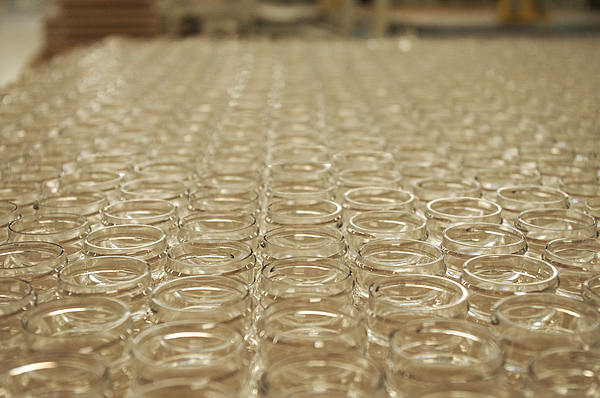
Are the possibilities of “direct printing” for your product portfolio of particular importance?
Eijsermans: Interesting and yes is the short answer. Naturally we will have to look into elements as technical feasibility, available space in production, the run length and other elements. But especially the personal care market will have a high interest. Eliminating shuttling cost to a print station are of importance, yet quality of print and speeds of print settings (due to legal requirements it seems that disclosures become ever larger, so more to print) is of higher importance.
Does direct printing offer new innovative possibilities in terms of bottle decoration?
Schröder: To be investigated would be the honest answer. Some printing options already exist and for various reasons have not yet been explored in full. Think e.g. about printing in layers to give the bottle a specific ‘touch’ effect. Yet, in honesty, this is one of the other exciting areas to explore further with specialists.
Can you give us an outlook for 2020?
Schröder: Yes, we have developed our own vision towards 2020. First of all we look at sustainable growth, specializing in PET and balancing better and better economy and innovation in running our business. Becoming involved in adjacent areas, such as 2-stage processing, decoration and specialty plastics, means that PET Power has ambition to broaden its scope step by step. We dare to dream to bring above average growth to the RPC Group, but let’s now first work hard to realize those dreams …
Mr Schröder, Mr Eijsermans thank you for talking to us.
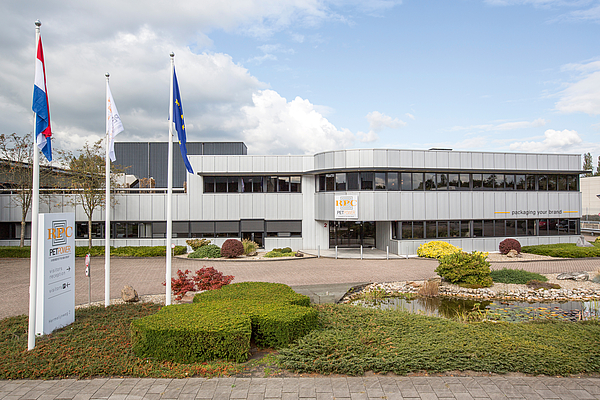
The comPETence center provides your organisation with a dynamic, cost effective way to promote your products and services.

magazine
Find our premium articles, interviews, reports and more
in 3 issues in 2025.





